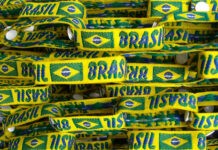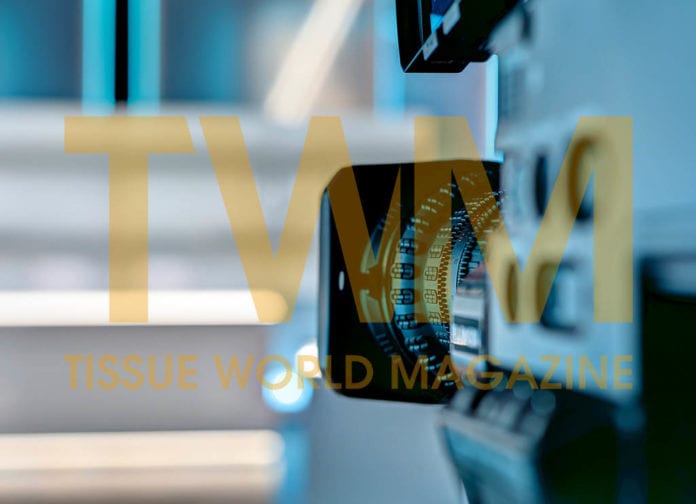By Helen Morris, Editor, Tissue World Magazine
TWM asked industry experts around the world to explain how they see emerging technologies, cultural trends, financial markets, political initiatives and energy costs affecting their short and long terms prospects.
Devrim Deniz, director, ICM Makina, Turkey
“Increased tissue supply and lower costs are pushing tissue companies to be more efficient. Raw material prices and energy costs are very much the same for all markets. The only difference between the markets is the labour cost. Everybody is looking for technology or equipment to have better efficiency in their production. Products differentiation is the key to cope with the market.
“The main trends in 2017/2018 I expect to see include the increase in private label and AfH products. Customers are always open to new products and the tissue industry is open to new ideas.
“In terms of the shifting economic conditions, we are seeing the market getting tighter everywhere. We’re also seeing a lot of demand for new technologies from the Far East and also Latin America. “Efficiency is key for the near future in the tissue market. We are investing into new ideas to produce different products in the most efficient way.”
Ian Padley, tissue applications manager at BTG, United Kingdom
“Many events such as M&A activity, rising pulp costs, mill consolidation and overcapacity have had an impact on companies such as BTG. There has been consolidation amongst major groups in Europe which has led to some mill closures, thus directly impacting business.
“On the other hand, this has been more than balanced by newer manufacturing assets coming on line, which present new opportunities. In some of these cases we see that overcapacity issues have been addressed, but also we note that smaller, older and less efficient assets have closed, to be replaced by more modern ones, not necessarily in the same locale. Such is the globalisation of tissue and parent roll sales.
“We have seen a lot of investment in areas as diverse as eastern Europe and Mexico as well as Asian nations outside China. This has also driven strong competition between producers, which are looking for quality enhancement, efficiency and productivity gains in ensuring asset safety.
“The march of private label in the developed western markets seems set to continue and we note that much of the new investment in North America and Europe is from producers with private label in their portfolio. Moreover, as well as production efficiency concerns, always the driver for private label, these producers are more and more frequently demanding brand-like hand feel and bulk qualities.
“The trend is not universal however even in Europe, with toipa brand competition fierce in the Nordic area for example. In either case, we see a welcome trend in developing technical tissue making solutions founded on good papermaking science.
“The continuing investment growth to supply local and evolving demand in Eastern Europe we already noted, but the Asian demand growth also seems to be picking up, as does the pace of investment there.
“We do see increasing globalisation in the movement of tissue. The slowing of growth in China doesn’t seem to have blunted their enthusiasm for installing new assets, in fact what we see is Chinese producers of declining grades diversifying into tissue. However, as they are finding out, tissue making is far from straightforward and thus one issue holding back tissue in China is a lack of trained engineers to supervise the plant. Being UK based I have to note that the UK is still a net importer of tissue and has had some asset closure in recent years, so one can speculate that some new tissue investment into the UK might be a logical outcome of Brexit.
“As in previous years, tissue growth accurately tracks GDP growth, urbanisation and improved infrastructure. Therefore, we see new demand in China, actually away from the booming coastal cities as well now, in SE Asia generally, eastern Europe, especially in the more recent EU entry countries (Bulgaria, Romania) and a massive demand in Turkey and also in Latin America.
“The two biggest challenges are structural and technical. The structural challenge is the supply of trained engineers/technical staff both for producers and partners. This is acute in China as a growing market issue, as mentioned, but also in the developed markets for different reasons.
“We have seen a major RIF in many big producers, especially in North America, which has led inevitably to early retirement of senior technical staff, coupled with a de-emphasis on new engineer recruitment and training. This goes hand in hand with a reduction in the places offered by specialist vocational, graduate and post-graduate training in paper engineering, few if any of which offer specialist tissue training in any case. Thus we have a skill shortage, and seemingly a difficulty in promoting papermaking in general as a worthwhile career.
“The technical challenge is that of pulp supply against a background of increasing quality demands. It is notable that many big pulp suppliers are increasingly focused on the pulp qualities needed for tissue, but it is also a fact for bleached softwood pulps, certain very desirable characteristics can only come from pulp grown in restricted regions, hence scarcity of supply.
“In an effort to improve hand feel, many producers therefore are increasing hardwood content, but this brings its own challenges. As an industry partner, furnish related issues are more a less a daily fact of life now.
“The opportunities are rife both regionally (Central Americas, Turkey, SE Asia, China, East Europe) and technically (high quality private label and differentiated branded offerings).”
Hussam Fansa, chief executive of Fansa Kagit, Turkey
“The events that have taken place during the past year have caused us to lose some international markets and created more competition in the local market. This has meant that all paper mills have had to lower their prices and find other market solutions.
“During 2017 and 2018, I believe paper mills and converters will try to force more of AfH products into the market.
“Around the world, we are also facing challenges from economic changes and the currency rate fluctuations around the world have created an unstable market for the whole world. There has been a complete change in the geographic supply market.
“In terms of geographical areas that are showing new demand potential, there’s more demand in the Gulf region for tissue products than ever before. There should – soon – be some force increases in the supply of tissue products in some countries that have low consumption ratio per capita.
“The main challenges and opportunities are that the jumbo rolls market will not recover any time soon. Paper mills will tend to produce more alternative products and will as much as possible take over the converting business from the converters.”
Bud Chase, vice president – tissue, Enzymatic Deinking Technologies, America
“Increasing pulp costs of roughly 5%per year are expected through to 2019 and is creating unique pressure on the entire tissue industry. Because pulp is so much of the cost of any tissue or towel product, At-Home or AfH, any increased cost must be passed along to the consumer or its impact must be minimised through process optimisation.
“With the current excess tissue capacity situation, passing this cost along to the consumer will be difficult. We see a significant increase in the interest level in process optimisation efforts, including enzyme use, to assist with the effort to reduce use of expensive pulps. These factors are always present to varying degrees in our markets and will always be influential.
“For example, several new machines have started up in Turkey and are creating a significant export of parent rolls from Turkey to Europe and the Middle East. Perhaps surprisingly, Great Britain is a recipient of some of this production.
“This excess capacity is made up of high quality, primarily virgin, mid-range products that can compete with middle to high-end production. This will continue to put price pressure into the mid to premium end of the European markets and drive expansion of these products in the Middle East markets. “As Turkey continues to expand its economy some of this production will get pulled back into Turkey but it will be years before this rebalances. A scenario of additional capacity coming on line is also playing out in the North American market as companies like ST Tissue, Von Drehle and Sofidel add capacity in both At-Home and AfH products. “First Quality continues to put pressure on the premium end of both the tissue and towel markets through private label sales. This highly competitive environment is forcing all manufacturers to focus on cost management and to use technologies that can reduce cost.
“Private label production continues to see quality improvements and likely will continue to grow in mid to upper level tissue and towel market segments through increased customer demand for similar quality products at a lower price. This may fuel the jumbo roll market whether export or not.
“The Middle East and African markets are both expanding now and will likely experience growing demand in the next two years and an increasing growth rate after that. The next two years will likely be the infancy of the development of specialised products, perhaps branded, to these markets.
“The main quality trend I see is an effort to improve the hand feel of nearly all tissue and towel products worldwide. This trend used to be routine in the bath tissue segment but is now also present in towel. It is also now affecting producers’ desire for recycled products. In virgin production, this is causing companies to use higher levels of hardwood, usually eucalyptus, to improve hand feel.
“This trend is heavily present in the North American markets but is beginning to be felt in the European markets also. Producers are rethinking the role of refining versus other alternatives to provide what refining can without the negatives of refining. We see more mills interested in energy reduction and sustainability goals related to water or energy than ever before. The continued influence of the big box stores in the North American market remains omnipresent. To remain a main supplier to this channel continues to demand an aggressive price point and also consistently high quality.
“This challenge is similar to a normal overcapacity challenge except that it is related directly to the capacity through this channel; similar solutions must be pursued involving reducing bottom line cost while maintaining quality.
“The main economic drivers are pulp prices and price pressure from over supply. If pulp prices continue to rise in this over supply environment, this will likely put tremendous cost reduction pressure on manufacturers to find ways to use lower cost pulps without sacrificing quality as well as cost reductions in energy use and other factors.
“This will lead the industry to become more flexible with pulp recipes in order to be able to take advantage of fluctuations in pulp prices within given markets. “The additional eucalyptus capacity that has come on line and will continue to come on line may provide a lower cost pulp alternative which may also assist with the hand feel trends that appear to be present in the higher end products.
“The Middle East and Africa in particular are both expanding marketplaces. Once the political unrest decreases in the Middle East I expect that market will expand even more rapidly. The North Africa market is poised to expand next. Both markets will likely initially adopt AfH products or their At-Home equivalent for use in home to minimise spend but low cost at home products will do well there quickly. The main challenge for the industry today is to combat rising pulp costs without sacrificing quality.
“Recycled tissue quality is a renewed thrust among several companies whose strategy is to have a preferred product and great utilisation of secondary fibre in an overcapacity industry with rising virgin fibre costs. Pulp prices will surely vary as markets oscillate through various cycles. Providing a means for tissue and towel manufacturers to adjust their virgin furnish recipes according to the pulp markets without sacrificing quality can be a pulp purchasing advantage.
“Continuous efforts to make better products using less water and energy while improving specific quality characteristics like dust reductions, improving softness or absorbency will always be important. Improving the quality of recycled fibre will be an increasingly important focal point in the face of rising virgin pulp costs.”
David Mackinson, senior research analyst, Euromonitor International, Chile
“South America is stuck in the middle of an economic deceleration. Recession in Argentina, Brazil, and Venezuela has moved the focus from growth in value terms to repositioning brands to capture down-trading. In Venezuela, the market continues to be impacted by government price controls and an unattractive business environment. On 9 July 2016, Kimberly-Clark Corp. announced it was suspending operations in Venezuela, where it operates within retail tissue (toilet paper, kitchen towels, etc) with its brands Kleenex and Scott as well as within retail hygiene (feminine sanitary protection and diapers) with its brands Huggies and Kotex. “Product pricing within tissue and hygiene is generally controlled by the government due to the rampant three-digit inflation in the country. K-C’s decision is significant in that it is based on the company not seeing an end in sight to the deterioration within the country – something it had held out for over the last 10 years. “In countries such as Ecuador, Chile, Colombia, and Bolivia, although GDP growth is still positive, the rates have been cut in half (and well below the +5% that they are used to). Consumers are reacting with caution. Although greater rates of access to credit within the modern retail channel encourages consumption, consumer are increasingly on the look-out for more competitive pricing.
“These dual trends, economic malaise as well as a migration to the modern retail channels (supermarkets/hypermarkets) have given private label brands their best opportunity yet in Latin America. Private label as a percentage of total tissue purchases is less than 10% in the region, amongst the lowest in the world (it is over 50% in Europe).
“Additionally, a collusion scandal in Chile in late 2015 and early 2016 prompted an outright boycott of the name brands. One of these companies reacted by slashing its own prices in order to stem the bleeding but private labels saw their market share increase several points in 2016.
“There will continue to be a real opportunity for private label brands, with a comparable quality, a more economic price, and a cleaner image to take even more market share from the name brands in 2017.
“Regarding the competitive environment, in Chile the arrival of Papelera Concepción (FPC) made negligible waves in 2016. “CMPC continues to promote the ATMOS/structured paper used in its kitchen towels (Nova Evolution). The value-added products are marketed as being more resistant and more absorbent. We can expect to see 2-ply toilet paper to continue to grow throughout the region. The product is competitively priced compared to 1-ply and so the migration has been attractive to consumers. There is also a manufacturer driven trend towards bigger rolls, 40m instead of 20. The downtrading mentioned above has been in terms of brands and pricing.
“Second-tier cities in countries such as Peru and Colombia will continue to support growth in volume terms. “Challenges for the next year or so include fixing prices in Venezuela, high inflation in Argentina, unemployment in Brazil; economic malaise in the rest of the region (consumers won’t want to splurge on tissue). The main opportunity is within the private label sector.”
Sahraoui Abdelhalim, factories manager at Gulf Paper Industries Factory Co, Saudi Arabia
“During the last two years we have observed important changes in the markets of the tissue paper industries. This has largely been represented in the restriction of the converted market in the gulf area due to the political events that have created overcapacity and saturation in the local market.
“I believe that a substantial progressive growth from the second half of the year in 2017, boosted by the European and North Africa market, will occur.
“Due to our limited production capacity we did not face a significant impact during this last year, which leads us to imagine that this is the right time to invest in a second tissue paper machine.”
Pirkko Petäjä, principal at Pöyry Management Consulting, Finland
“Shifting economic conditions are impacting the tissue business; the Iberian Peninsula is recovering from the double dip recession and is only reaching the previous volume levels. Local industry in Greece has significantly suffered of the hard times and Greece relies currently very much on tissue imports. The Brexit impact has reduced prices in the UK and make exports to the UK less interesting.
“The Russian and Ukrainian crisis has seriously impacted the whole Eastern European tissue industry. Local markets in Ukraine, exports to Russia and local production have all been impacted. Tissue imports to Ukraine show the same declining trend. The market in Ukraine fell some -20 % in 2015. Russian market growth has been similarly impacted. Even if the value of the Ruble makes exporting the current overcapacity easier, the problem is that many of the surrounding economies have collapsed.
“There are also positive impacts to be expected; in Iran, the economic prospects are good after the sanctions and this is expected to reflect to the tissue industry. Clearly the economic recovery is shown in the tissue markets in many regions and even in Ukraine there are signs that the decline is levelling out.
“Economic conditions have always impacted the tissue business and the main challenges the industry is facing often originate from these impacts. The best opportunity to tackle the economic fluctuation is consolidation and growth. Only the companies that are strong enough can have continuously high margins over the business cycles.
“Consolidation and larger footprint make it possible for the players to service the retailers more efficiently. Large companies can improve their facilities, machinery, innovation, sales and marketing, even source raw materials at better prices.
“Consolidation, especially in the regions where the industry is very fragmented is a way to tackle the economic variations.”
Vedansh Gupta, solutions provider at Artica International, United Arab Emirates
“Over the past year, the bigger mills have continued to acquire mills and set up new capacity. The price of tissue is on a free fall and in the Middle East we have a severe overcapacity issue, giving rise to lower margins and more competitiveness.
“Over the past two years the market has switched from a price sensitive market to a more cost-sensitive market, and prices of tissue grades have tanked by over USD 200 PMT over the course of two years. The fall hasn’t stopped.
“As suppliers of jumbo reels, we see our customers concentrating once again on consumer products. This is a strategic move to be away from the AfH market, which is once again highly competitive.
“We are seeing more and more converters and manufacturers wanting to concentrate more on developing their own brands.
“Shifting economic conditions have sent the global currency on a goose chase, and with the events at Hanjin along with an increase in Brent Crude prices, we forecast higher freight rates.
“The same issues will keep the tissue market unstable for a near term. However, in the long term the industry should be able to absorb this shock.
“As tissue is so freight sensitive, any fluctuation in currency and or freight does have a massive negative impact on the viability of moving tissue in finished or jumbo rolls.
“Generally, we are seeing more demand originating from Africa, and hope the same revives more as the commodity prices have reached rock bottom, and in the mid-term the prices should rise. This will give rise to a revival in the African economy and thereby create more demand.
“As tissue is mainly a luxury item in this part of the world, the rise in demand will only showcase a rise in disposable income.
“We are facing increased competition in the region, with most Middle Eastern mills sitting on massive stock and in a position to liquidate. We are tackling the same by getting into more value-added services as tissue chemicals, core boards, dispensers, and everything else our customers generally use.
“On the paper side we are promoting structured paper as we believe this will be the next evolution in the tissue industry after the Crescent Former.”
































